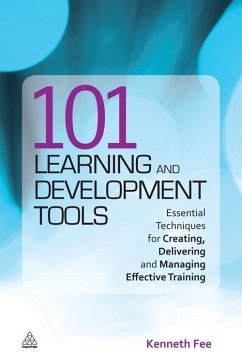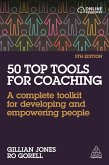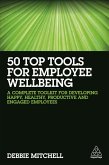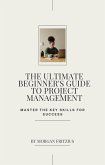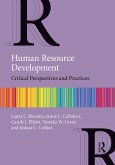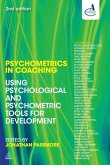Kenneth Fee
101 Learning and Development Tools (eBook, ePUB)
Essential Techniques for Creating, Delivering and Managing Effective Training
29,95 €
29,95 €
inkl. MwSt.
Sofort per Download lieferbar

15 °P sammeln
29,95 €
Als Download kaufen

29,95 €
inkl. MwSt.
Sofort per Download lieferbar

15 °P sammeln
Jetzt verschenken
Alle Infos zum eBook verschenken
29,95 €
inkl. MwSt.
Sofort per Download lieferbar
Alle Infos zum eBook verschenken

15 °P sammeln
Kenneth Fee
101 Learning and Development Tools (eBook, ePUB)
Essential Techniques for Creating, Delivering and Managing Effective Training
- Format: ePub
- Merkliste
- Auf die Merkliste
- Bewerten Bewerten
- Teilen
- Produkt teilen
- Produkterinnerung
- Produkterinnerung

Bitte loggen Sie sich zunächst in Ihr Kundenkonto ein oder registrieren Sie sich bei
bücher.de, um das eBook-Abo tolino select nutzen zu können.
Hier können Sie sich einloggen
Hier können Sie sich einloggen
Sie sind bereits eingeloggt. Klicken Sie auf 2. tolino select Abo, um fortzufahren.

Bitte loggen Sie sich zunächst in Ihr Kundenkonto ein oder registrieren Sie sich bei bücher.de, um das eBook-Abo tolino select nutzen zu können.
101 Learning and Development Tools is your practical guide to all the most up-to-date training techniques, organized around the classic learning and development cycle. Whether you need a quick, ready solution or some guidance on where to go for in-depth information, this is your essential reference guide. It picks up from where you are in the process of managing learning, and helps you place it in a broader context.
Each chapter is a mini guide to each tool with:
a description of the tool
analysis
resources needed
cost implications
cross-references to help you identify…mehr
- Geräte: eReader
- mit Kopierschutz
- eBook Hilfe
- Größe: 1.78MB
- FamilySharing(5)
Andere Kunden interessierten sich auch für
![101 Coaching Supervision Techniques, Approaches, Enquiries and Experiments (eBook, ePUB) 101 Coaching Supervision Techniques, Approaches, Enquiries and Experiments (eBook, ePUB)]() 101 Coaching Supervision Techniques, Approaches, Enquiries and Experiments (eBook, ePUB)34,95 €
101 Coaching Supervision Techniques, Approaches, Enquiries and Experiments (eBook, ePUB)34,95 €![50 Top Tools for Coaching (eBook, ePUB) 50 Top Tools for Coaching (eBook, ePUB)]() Gillian Jones50 Top Tools for Coaching (eBook, ePUB)27,95 €
Gillian Jones50 Top Tools for Coaching (eBook, ePUB)27,95 €![50 Top Tools for Employee Wellbeing (eBook, ePUB) 50 Top Tools for Employee Wellbeing (eBook, ePUB)]() Debbie Mitchell50 Top Tools for Employee Wellbeing (eBook, ePUB)29,95 €
Debbie Mitchell50 Top Tools for Employee Wellbeing (eBook, ePUB)29,95 €![Compensation Sense 101 (eBook, ePUB) Compensation Sense 101 (eBook, ePUB)]() Cassandra FauroteCompensation Sense 101 (eBook, ePUB)14,95 €
Cassandra FauroteCompensation Sense 101 (eBook, ePUB)14,95 €![The Ultimate Beginner's Guide to Project Management: Master the Key Skills for Success (eBook, ePUB) The Ultimate Beginner's Guide to Project Management: Master the Key Skills for Success (eBook, ePUB)]() Morgan FritziusThe Ultimate Beginner's Guide to Project Management: Master the Key Skills for Success (eBook, ePUB)7,99 €
Morgan FritziusThe Ultimate Beginner's Guide to Project Management: Master the Key Skills for Success (eBook, ePUB)7,99 €![Human Resource Development (eBook, ePUB) Human Resource Development (eBook, ePUB)]() Laura L. BieremaHuman Resource Development (eBook, ePUB)40,95 €
Laura L. BieremaHuman Resource Development (eBook, ePUB)40,95 €![Psychometrics in Coaching (eBook, ePUB) Psychometrics in Coaching (eBook, ePUB)]() Psychometrics in Coaching (eBook, ePUB)29,95 €
Psychometrics in Coaching (eBook, ePUB)29,95 €-
-
-
101 Learning and Development Tools is your practical guide to all the most up-to-date training techniques, organized around the classic learning and development cycle. Whether you need a quick, ready solution or some guidance on where to go for in-depth information, this is your essential reference guide. It picks up from where you are in the process of managing learning, and helps you place it in a broader context.
Each chapter is a mini guide to each tool with:
a description of the tool
analysis
resources needed
cost implications
cross-references to help you identify alternative or related tools for further study or investigation
101 Learning and Development Tools is the indispensable, all-in-one-volume reference book for both professionals in the field and students learning about the subject.
Each chapter is a mini guide to each tool with:
a description of the tool
analysis
resources needed
cost implications
cross-references to help you identify alternative or related tools for further study or investigation
101 Learning and Development Tools is the indispensable, all-in-one-volume reference book for both professionals in the field and students learning about the subject.
Produktdetails
- Produktdetails
- Verlag: Kogan Page eBook
- Seitenzahl: 272
- Erscheinungstermin: 3. September 2011
- Englisch
- ISBN-13: 9780749461096
- Artikelnr.: 38399420
- Verlag: Kogan Page eBook
- Seitenzahl: 272
- Erscheinungstermin: 3. September 2011
- Englisch
- ISBN-13: 9780749461096
- Artikelnr.: 38399420
- Herstellerkennzeichnung Die Herstellerinformationen sind derzeit nicht verfügbar.
Kenneth Fee has worked in learning and development for 25 years, as a trainer, consultant, manager, and writer, among other roles. He has an MA degree in social science, an MBA, certificates in training and in assessment, a professional diploma in training management, and he is a Chartered Fellow of CIPD and a Fellow of CMI.
Introduction
1. The learning and development cycle
Part 1 Learning needs analysis
2. Understanding learning, development, education and training
3. L&DNA grids
4. Identifying organizational learning needs: a step-by-step approach
5. Performance analysis quadrant
6. The learning curve
7. Bloom's taxonomy of learning domains
8. Informal and non-formal learning
9. Kolb's experiential learning cycle
10. Honey and Mumford's learning styles
11. Rose's learning styles
12. Overcoming barriers to learning
13. Johari window
14. How to develop a learning culture
15. How to develop a learning organization
16. The learning value chain
17. Accelerated learning
18. Emotional intelligence
19. Gardner's multiple intelligences
20. Neuro-linguistic programming
21. Knowledge management: distinguishing data, information and knowledge
22. The five aspects of talent management
23. The talent web
24. The succession planning cycle
25. Devising and using standards of competence
26. Board-level development: a needs audit
27. Learning methods and styles grid
28. Learning methods choice matrix
Part 2 Planning learning
29. The six essential elements of a learning strategy
30. Using the learning and development cycle to plan learning interventions
31. A step-by-step guide to planning a learning event
32. Personal development planning
33. Using different approaches to learning and development
34. Criteria for choosing a learning approach
35. A checklist for procuring learning services
36. Outsourcing versus insourcing
37. The four phases of knowledge management
38. The three component parts of e-learning
39. The five models of e-learning
40. Learning design: the five dimensions
41. The route map model for e-learning design
42. A classification of e-learning technologies
43. What to look for in a digital learning platform
44. Checklist - 10 things to look out for when dealing with e-learning
vendors
45. What to look for in a learning and development consultant
46. What to look for in learning materials
47. Working with union learning representatives
48. Using qualifications
49. Reference list of learning and development methods
Part 3 Implementing learning
50. Icebreakers
51. Coaching - tips and pitfalls
52. Facilitation - tips and pitfalls
53. Lecturing - tips and pitfalls
54. How to mentor someone
55. How to organize work-based learning
56. Guided practice
57. Putting together action learning sets
58. Setting up a community of practice
59. The seven pillars of a corporate university
60. Preparing a lesson plan
61. Preparing to deliver a course: a checklist
62. Tips for team teaching
63. 360-degree feedback
64. Psychometric instruments for development rather than assessment
65. Innovative approaches to learning
66. Using storytelling in learning and development
67. Games, and learning through play
68. Simulation
69. Volunteering-based learning
70. Development centres
71. Assessing and recording competence
72. Learning logs and contracts
73. Guided reading
74. Appreciative inquiry
75. Networking via professional bodies
76. Outplacement services
77. Blended learning models
78. Social networking and collaborative tools
79. Checklist for setting up a learning centre
Part 4 Evaluating learning
80. Costing learning
81. Assessing learning
82. Talent management and development: the GE nine box model
83. Quality management of learning: the diamond model
84. Applying quality management tools to learning
85. Making a business case for learning and development
86. Internal marketing of learning and development
87. How to get value from a corporate university
88. How to get value from learning consultants
89. Evaluation: how to recognize and when to use the main methods
90. Kirkpatrick's four levels of evaluation
91. Producing an evaluation sheet
92. Measures in evaluating learning
93. CIPD partnership of learning model
94. Evaluation metrics
95. Calculating return on investment
96. Evaluation: return on expectations
97. Six Sigma for learning and development
98. Balanced scorecard for learning and development
99. E-learning: the impact matrix
100. Evaluation: total value add
101. You
1. The learning and development cycle
Part 1 Learning needs analysis
2. Understanding learning, development, education and training
3. L&DNA grids
4. Identifying organizational learning needs: a step-by-step approach
5. Performance analysis quadrant
6. The learning curve
7. Bloom's taxonomy of learning domains
8. Informal and non-formal learning
9. Kolb's experiential learning cycle
10. Honey and Mumford's learning styles
11. Rose's learning styles
12. Overcoming barriers to learning
13. Johari window
14. How to develop a learning culture
15. How to develop a learning organization
16. The learning value chain
17. Accelerated learning
18. Emotional intelligence
19. Gardner's multiple intelligences
20. Neuro-linguistic programming
21. Knowledge management: distinguishing data, information and knowledge
22. The five aspects of talent management
23. The talent web
24. The succession planning cycle
25. Devising and using standards of competence
26. Board-level development: a needs audit
27. Learning methods and styles grid
28. Learning methods choice matrix
Part 2 Planning learning
29. The six essential elements of a learning strategy
30. Using the learning and development cycle to plan learning interventions
31. A step-by-step guide to planning a learning event
32. Personal development planning
33. Using different approaches to learning and development
34. Criteria for choosing a learning approach
35. A checklist for procuring learning services
36. Outsourcing versus insourcing
37. The four phases of knowledge management
38. The three component parts of e-learning
39. The five models of e-learning
40. Learning design: the five dimensions
41. The route map model for e-learning design
42. A classification of e-learning technologies
43. What to look for in a digital learning platform
44. Checklist - 10 things to look out for when dealing with e-learning
vendors
45. What to look for in a learning and development consultant
46. What to look for in learning materials
47. Working with union learning representatives
48. Using qualifications
49. Reference list of learning and development methods
Part 3 Implementing learning
50. Icebreakers
51. Coaching - tips and pitfalls
52. Facilitation - tips and pitfalls
53. Lecturing - tips and pitfalls
54. How to mentor someone
55. How to organize work-based learning
56. Guided practice
57. Putting together action learning sets
58. Setting up a community of practice
59. The seven pillars of a corporate university
60. Preparing a lesson plan
61. Preparing to deliver a course: a checklist
62. Tips for team teaching
63. 360-degree feedback
64. Psychometric instruments for development rather than assessment
65. Innovative approaches to learning
66. Using storytelling in learning and development
67. Games, and learning through play
68. Simulation
69. Volunteering-based learning
70. Development centres
71. Assessing and recording competence
72. Learning logs and contracts
73. Guided reading
74. Appreciative inquiry
75. Networking via professional bodies
76. Outplacement services
77. Blended learning models
78. Social networking and collaborative tools
79. Checklist for setting up a learning centre
Part 4 Evaluating learning
80. Costing learning
81. Assessing learning
82. Talent management and development: the GE nine box model
83. Quality management of learning: the diamond model
84. Applying quality management tools to learning
85. Making a business case for learning and development
86. Internal marketing of learning and development
87. How to get value from a corporate university
88. How to get value from learning consultants
89. Evaluation: how to recognize and when to use the main methods
90. Kirkpatrick's four levels of evaluation
91. Producing an evaluation sheet
92. Measures in evaluating learning
93. CIPD partnership of learning model
94. Evaluation metrics
95. Calculating return on investment
96. Evaluation: return on expectations
97. Six Sigma for learning and development
98. Balanced scorecard for learning and development
99. E-learning: the impact matrix
100. Evaluation: total value add
101. You
Introduction
1. The learning and development cycle
Part 1 Learning needs analysis
2. Understanding learning, development, education and training
3. L&DNA grids
4. Identifying organizational learning needs: a step-by-step approach
5. Performance analysis quadrant
6. The learning curve
7. Bloom's taxonomy of learning domains
8. Informal and non-formal learning
9. Kolb's experiential learning cycle
10. Honey and Mumford's learning styles
11. Rose's learning styles
12. Overcoming barriers to learning
13. Johari window
14. How to develop a learning culture
15. How to develop a learning organization
16. The learning value chain
17. Accelerated learning
18. Emotional intelligence
19. Gardner's multiple intelligences
20. Neuro-linguistic programming
21. Knowledge management: distinguishing data, information and knowledge
22. The five aspects of talent management
23. The talent web
24. The succession planning cycle
25. Devising and using standards of competence
26. Board-level development: a needs audit
27. Learning methods and styles grid
28. Learning methods choice matrix
Part 2 Planning learning
29. The six essential elements of a learning strategy
30. Using the learning and development cycle to plan learning interventions
31. A step-by-step guide to planning a learning event
32. Personal development planning
33. Using different approaches to learning and development
34. Criteria for choosing a learning approach
35. A checklist for procuring learning services
36. Outsourcing versus insourcing
37. The four phases of knowledge management
38. The three component parts of e-learning
39. The five models of e-learning
40. Learning design: the five dimensions
41. The route map model for e-learning design
42. A classification of e-learning technologies
43. What to look for in a digital learning platform
44. Checklist - 10 things to look out for when dealing with e-learning
vendors
45. What to look for in a learning and development consultant
46. What to look for in learning materials
47. Working with union learning representatives
48. Using qualifications
49. Reference list of learning and development methods
Part 3 Implementing learning
50. Icebreakers
51. Coaching - tips and pitfalls
52. Facilitation - tips and pitfalls
53. Lecturing - tips and pitfalls
54. How to mentor someone
55. How to organize work-based learning
56. Guided practice
57. Putting together action learning sets
58. Setting up a community of practice
59. The seven pillars of a corporate university
60. Preparing a lesson plan
61. Preparing to deliver a course: a checklist
62. Tips for team teaching
63. 360-degree feedback
64. Psychometric instruments for development rather than assessment
65. Innovative approaches to learning
66. Using storytelling in learning and development
67. Games, and learning through play
68. Simulation
69. Volunteering-based learning
70. Development centres
71. Assessing and recording competence
72. Learning logs and contracts
73. Guided reading
74. Appreciative inquiry
75. Networking via professional bodies
76. Outplacement services
77. Blended learning models
78. Social networking and collaborative tools
79. Checklist for setting up a learning centre
Part 4 Evaluating learning
80. Costing learning
81. Assessing learning
82. Talent management and development: the GE nine box model
83. Quality management of learning: the diamond model
84. Applying quality management tools to learning
85. Making a business case for learning and development
86. Internal marketing of learning and development
87. How to get value from a corporate university
88. How to get value from learning consultants
89. Evaluation: how to recognize and when to use the main methods
90. Kirkpatrick's four levels of evaluation
91. Producing an evaluation sheet
92. Measures in evaluating learning
93. CIPD partnership of learning model
94. Evaluation metrics
95. Calculating return on investment
96. Evaluation: return on expectations
97. Six Sigma for learning and development
98. Balanced scorecard for learning and development
99. E-learning: the impact matrix
100. Evaluation: total value add
101. You
1. The learning and development cycle
Part 1 Learning needs analysis
2. Understanding learning, development, education and training
3. L&DNA grids
4. Identifying organizational learning needs: a step-by-step approach
5. Performance analysis quadrant
6. The learning curve
7. Bloom's taxonomy of learning domains
8. Informal and non-formal learning
9. Kolb's experiential learning cycle
10. Honey and Mumford's learning styles
11. Rose's learning styles
12. Overcoming barriers to learning
13. Johari window
14. How to develop a learning culture
15. How to develop a learning organization
16. The learning value chain
17. Accelerated learning
18. Emotional intelligence
19. Gardner's multiple intelligences
20. Neuro-linguistic programming
21. Knowledge management: distinguishing data, information and knowledge
22. The five aspects of talent management
23. The talent web
24. The succession planning cycle
25. Devising and using standards of competence
26. Board-level development: a needs audit
27. Learning methods and styles grid
28. Learning methods choice matrix
Part 2 Planning learning
29. The six essential elements of a learning strategy
30. Using the learning and development cycle to plan learning interventions
31. A step-by-step guide to planning a learning event
32. Personal development planning
33. Using different approaches to learning and development
34. Criteria for choosing a learning approach
35. A checklist for procuring learning services
36. Outsourcing versus insourcing
37. The four phases of knowledge management
38. The three component parts of e-learning
39. The five models of e-learning
40. Learning design: the five dimensions
41. The route map model for e-learning design
42. A classification of e-learning technologies
43. What to look for in a digital learning platform
44. Checklist - 10 things to look out for when dealing with e-learning
vendors
45. What to look for in a learning and development consultant
46. What to look for in learning materials
47. Working with union learning representatives
48. Using qualifications
49. Reference list of learning and development methods
Part 3 Implementing learning
50. Icebreakers
51. Coaching - tips and pitfalls
52. Facilitation - tips and pitfalls
53. Lecturing - tips and pitfalls
54. How to mentor someone
55. How to organize work-based learning
56. Guided practice
57. Putting together action learning sets
58. Setting up a community of practice
59. The seven pillars of a corporate university
60. Preparing a lesson plan
61. Preparing to deliver a course: a checklist
62. Tips for team teaching
63. 360-degree feedback
64. Psychometric instruments for development rather than assessment
65. Innovative approaches to learning
66. Using storytelling in learning and development
67. Games, and learning through play
68. Simulation
69. Volunteering-based learning
70. Development centres
71. Assessing and recording competence
72. Learning logs and contracts
73. Guided reading
74. Appreciative inquiry
75. Networking via professional bodies
76. Outplacement services
77. Blended learning models
78. Social networking and collaborative tools
79. Checklist for setting up a learning centre
Part 4 Evaluating learning
80. Costing learning
81. Assessing learning
82. Talent management and development: the GE nine box model
83. Quality management of learning: the diamond model
84. Applying quality management tools to learning
85. Making a business case for learning and development
86. Internal marketing of learning and development
87. How to get value from a corporate university
88. How to get value from learning consultants
89. Evaluation: how to recognize and when to use the main methods
90. Kirkpatrick's four levels of evaluation
91. Producing an evaluation sheet
92. Measures in evaluating learning
93. CIPD partnership of learning model
94. Evaluation metrics
95. Calculating return on investment
96. Evaluation: return on expectations
97. Six Sigma for learning and development
98. Balanced scorecard for learning and development
99. E-learning: the impact matrix
100. Evaluation: total value add
101. You
